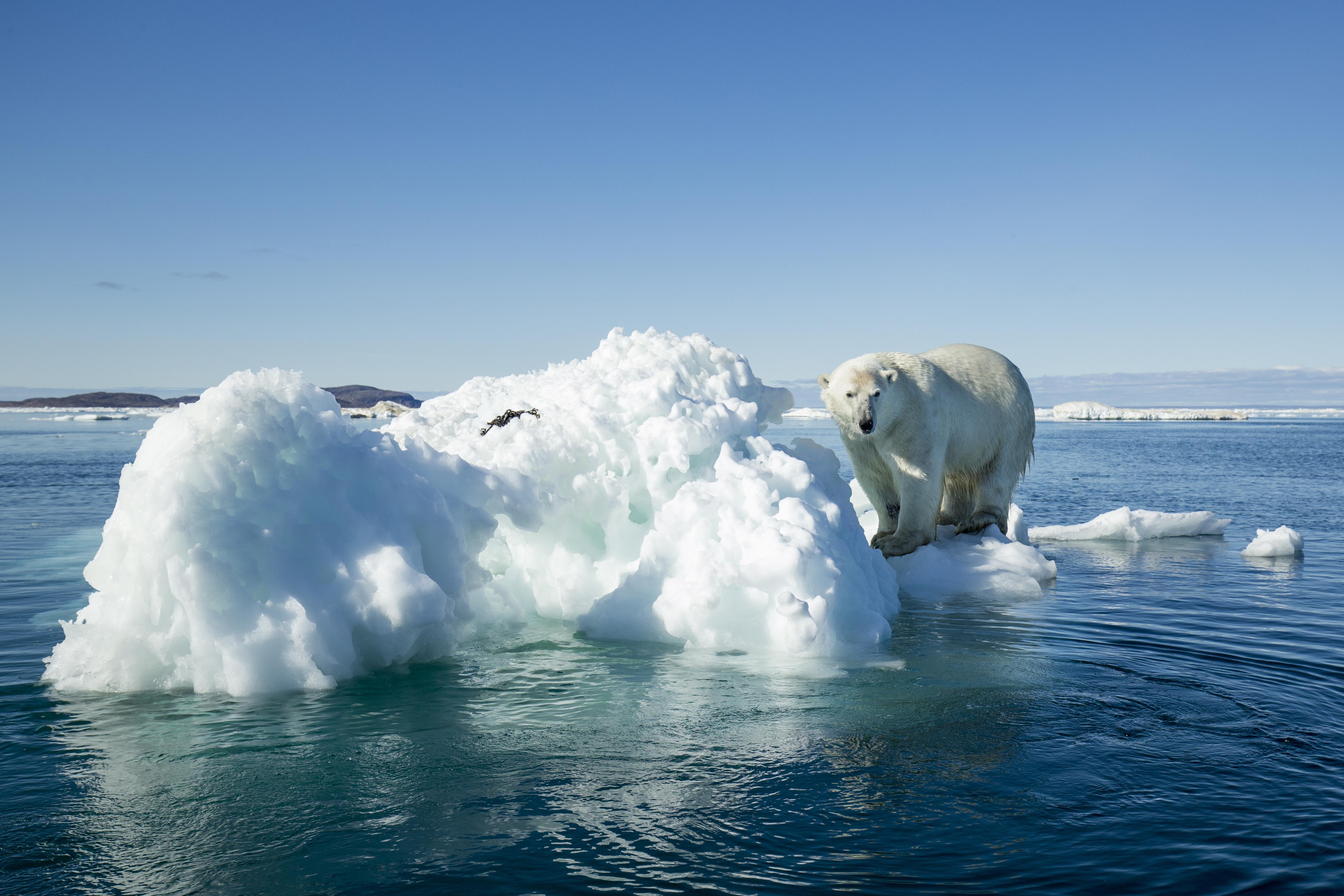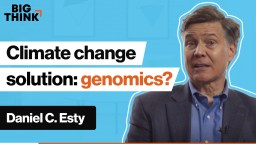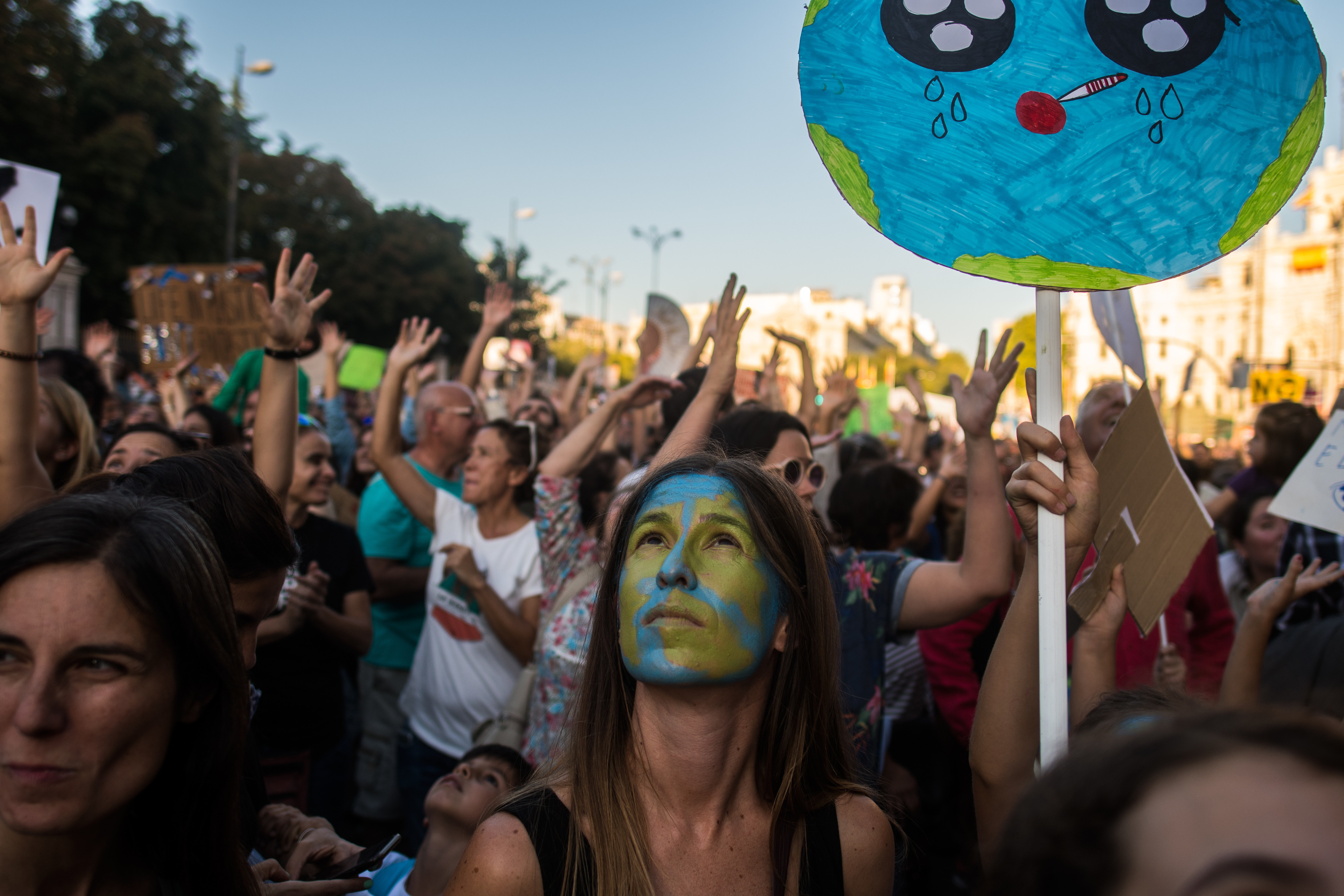GINA MCCARTHY: Climate is always portrayed on newscasts as being some kind of big debate. You know, the big debate among the scientists is that 97 percent of them know it's happening and are really worried about it. Three percent are skeptical. That's not a balance. That's an overwhelming majority and that needs to drive the decision, especially in a democracy.
BILL NYE: The more you think about it everybody, 97 percent of the world's scientists – not 97 percent of some institute that somebody started in a remote part of the world and is releasing press releases. Ninety-seven percent of the scientists in the world are very concerned about climate change.
PHILIP KITCHER: Climate science is built on views about the atmosphere that have been developed very successfully and in a very rigorous way from the nineteenth century to the present. There isn't any doubt about the mechanisms of the greenhouse effect. There isn't really any doubt about the evidence behind the consensus that says we have contributed enormously to the warming effects that are now becoming apparent not only in the present but also from the record of the earth's average temperature.
NYE: You can look at the graphs. You can study the stuff for yourself. If nothing else do this. Wherever you live, get access to the coldest temperature of each year for the last century. And unless you live in just very few places you will see the coldest temperature where you live has steadily increased. They'll be some dips. There'll be some ups, but overall you'll find it – and that's just one that almost everybody who has internet access can get those data, they're available. And just look at that one thing and you'll see the world's getting warmer everybody.
MICHELLE THALLER: Now the reason our atmosphere is getting warmer and warmer and warmer is because we humans are putting lots of carbon dioxide up into the atmosphere. And this acts as what we call a greenhouse gas. Sunlight can get through the atmosphere, but the carbon dioxide traps it and it can't release itself back into space so it gets warmer and warmer over time. Carbon dioxide doesn't just warm the atmosphere. It also affects our oceans. When ocean water combines with carbon dioxide to create something called carbonic acid and it makes the oceans more and more acidic over time. And this is a really big problem for marine life. There are things like algae. The algae in the oceans are responsible for most of the oxygen that we breathe. And the algae are having trouble forming because of the higher acid levels in the ocean. So even if the one thing you solved was cooling the earth down, if we continue to put more and more carbon dioxide into our atmosphere there will be other serious repercussions. We could end up killing the ocean life system, for example.
NYE: The earth is getting warmer faster than it has ever gotten before and that's the problem. It's not that the world hasn't had more carbon dioxide. It's not that the world hasn't been warmer. The problem is the speed at which things are changing. We are inducing a sixth mass extinction event kind of by accident and we don't want to be the extinctee if I may coin this noun.
DAVID WALLACE-WELLS: Climate change challenges, threatens to undermine the entire infrastructure of our modern world, all of our political institutions, all of our social institutions, our national institutions. Everything is vulnerable to the transformations of climate because we all live within climate. There's basically no life on Earth I think that will be untouched by the force of climate in the decades ahead and in most cases that means deformed, damaged, transformed. The UN says that the track we're on now, the trajectory we're on now is likely to take us to about 4.3 degrees Celsius of warming by the end of the century if we don't change course. So, 4.3 degrees would mean $600 trillion in global climate damages. That's double all the wealth that exists in the world today. It would mean parts of the world could be hit by six climate driven natural disasters at once. It would mean more than double the warfare that we see today. And the impacts would be in our economic activity. It would be in flooding and the refugee crisis. There are so many impacts that we have not really been able to think clearly about because all of us are so reluctant to consider these horrifying outcomes. But the fact that they are horrifying should not make us turn away. They should make us focus on them more intently. We all have all of these psychological reflexes that make us reluctant to consider horrible possibilities. And for that reason it's more important for us to take seriously the science because we need to fight against those impulses to do better planning, to take more aggressive action than we would if we allowed ourselves to slip back into complacency.
KITCHER: Now we can't say, for example, how much the temperature of the Earth is going to rise by 2100. The one that's really important to understand here is that 2100 isn't some magical moment. I mean it's not really going to matter that much if the temperature rises say four or five degrees Celsius. If that comes in 2100 or whether it comes in 2120 or whether it comes in 2150 or whether it comes in 2200. That's going to be a real disaster for human beings on our planet because five degree Celsius above preindustrial temperatures is a world in which there's no ice whatsoever and in which you've got reptiles that are able to live within both polar circles. It's that hot. That would be a world in which lots of the Earth's surface might become quite uninhabitable for us.
WALLACE-WELLS: Many of the biggest cities in south Asia and the Middle East would be lethally hot in summer at two degrees which could happen as soon as 2050. These are cities like Calcutta, five, ten, twelve million people. You wouldn't be able to go outside, certainly work outside without incurring a lethal risk and that could happen again just by 2050 which is one reason why the UN expects that we could have 200 million climate refugees by that same date, 2050, 200 million. They think it's possible that we get as many as one billion which is as many people as live today in North and South America combined. I think those numbers are realistic. I think they're too high, but even if we get 100 million or 150 million climate refugees it's important to remember that the Syrian refugee crisis which totally destabilized European politics, led in its way to Brexit and has transformed our politics globally through the way it's affected Europe was the result of just one million Syrian refugees coming to the continent. We're talking about a refugee crisis that is almost certain to be a hundred times as large and it comes at a time when most nations of the world are retreating from our commitments to one another, retreating from our organizations and alliances, retreating from the UN, retreating from the EU and embracing xenophobia and nativism and nationalism. That's especially concerning when you think about what's ahead because there are going to be many more people in much more desperate need in the decades ahead.
KITCHER: Some of the forecasts about the future – rising sea levels, much more frequent heat waves, much bigger storms are really very serious dangers for the habitability of some parts of the world, droughts. All of that sort of stuff in general is very, very well supported by the evidence.
CHARLES FERGUSON: If we let this problem continue to worsen then 20, 30, 40, 50 years from how our children are going to suffer a lot. About half of the world's largest cities are on coastlines and if the Greenland ice melts then the sea is going to rise by over 20 feet and half of the world's cities will be underwater literally.
JON GERTNER: In fact, our civilization has been built on the idea that sea levels are relatively stable and we know that they're not. We know that they're not by looking back in time that ice sheets have melted before, that vast floods have covered our coasts. But we also know now by just watching our tidal gauges, by using our satellites to measure how the tides are going up that sea levels are rising. They're rising at an accelerating rate and that the future bodes poorly for this idea that we can kind of keep colonizing the coast and stake out on these coastal cities.
WALLACE-WELLS: But there are cases that are worse than 4.3 degrees. There are what are called feedback loops in the climate system that could conceivably accelerate warming beyond what human action does. So there's what's called the albedo effect which is a little complicated to explain.
GERTNER: As the ice sort of decreases, the albedo of the Arctic changes and albedo is the reflectivity. Ice, of course, is white and bright and it reflects solar energy back into space. When it exposes dark open ocean that open ocean absorbs more sunlight and more energy and it creates a kind of feedback loop that the more ocean that's exposed, the more energy that's absorbed, the more heat that's actually absorbed as well and it kind of builds on itself.
WALLACE-WELLS: As Arctic ice melts the planet's ability to reflect solar energy back into space would diminish and warming would accelerate. There is froze in the Arctic permafrost a lot of methane or I should say a lot of carbon which could be released into the atmosphere as methane if that permafrost melts. Methane is depending on how you count at least 30 and perhaps 80 times as powerful a greenhouse gas as carbon dioxide and there is enough carbon in that permafrost to double the concentration of carbon in the atmosphere that we have today. If that were released it could accelerate warming by a couple of degrees all on its own.
FERGUSON: Weather will be far more extreme. The last time that the world was as hot as it will get this century if we don't fix climate change was about 100,000 years ago and scientists have found evidence of extremely destructive storms. Storms that were strong enough to lift very large boulders from the bottom of the ocean and put them on top of mountains. So Hurricane Sandy is very, very minor trouble compared to what we'll face if we don't handle this problem.
THALLER: The problem is really getting at our emissions of carbon dioxide and stopping those and stopping these dramatic changes that we see coming. Some of them are going to be very difficult to stop. I mean right now we're observing the icecaps a both poles of the planet in Antarctica and in the North Pole melting very quickly. That won't stop. Those icecaps will largely melt over many, many centuries and the ocean levels will rise in accordance. And I do think that the challenge right now is how are we going to deal with the changes. We might not be able to change very many of them at this point. We need to band together as people, make sure that we have ways to deal with refugees. If people need to leave where they are because the oceans are rising there's going to be a lot of people that need homes and there's going to be a lot of support needed for the changes in agriculture, in fishing, in so many parts of our economy and our lives. There's no easy solution.
DANIEL ESTY: I think this has to be understood as in some regards an ethical issue, a moral issue and one has to see it as a wrong to contaminate the planet and to put at risk the future of humanity on the planet.
ANDREW WINSTON: Often what people call sustainability which is not I think always the perfect word but the things that fall under that that are environmental or social challenges, there's this assumption in business quite often that trying to tackle these issues will be expensive. That there's this tradeoff, this fundamental tradeoff between trying to manage these big challenges in a profitable way and just managing your bottom line in a normal way and that it's going to be expensive. This myth was based in some reality for a long time. There were things that did cost more money and green products or green services they weren't very good for a long time. So there's the sense that green was somehow not good for business. It wasn't out of nowhere but that's really a dated view.
WALLACE-WELLS: There's a huge amount of new research in this area that reverses that logic completely which says that faster action on climate would actually be, would offer huge economic payoffs in a quite short term way. There was one big study in 2018 that said we could add $26 trillion to the global economy just by 2030 through rapid decarbonization. I think that estimate may be a little rosy but it suggests just how completely this conventional wisdom has flipped just in the last few years. I don't think that understanding has yet risen up to the level of our policymakers who are still a little bit bound by the earlier perspective that we'd have to forego economic growth to take action. But I think it will get to them soon and I think our policy and our politics will change actually quite dramatically when that happens. So I don't think it's a question of money. I really think it's a question of political will through the green energy we have now, through the knowledge we have about infrastructure and agriculture. It is within our power to take action and avert our worst case outcomes.
WINSTON: We now have a situation where the challenges are so vast and the world is changing so fundamentally that the only path we have forward is to manage these issues. That's the point of the big pivot so that we will find a profitable path to do it and we have so many options now. There's a whole category of things that companies do that save money very quickly. All things that fall under kind of the banner of ecoefficiency or energy efficiency or using less. I mean in part green is about doing more with less. That's just good business.
WALLACE-WELLS: And you do see Bill Gates doing exactly that. He's made really significant investments in negative emissions technologies and is, in fact, behind the most exciting research in that area which is quite exciting. There's a company called Carbon Engineering led by a guy named David Keith that has found that you can take carbon out of the atmosphere at a cost of about $100 a ton. That would mean, in theory, that we could completely neutralize all global carbon emissions at a cost of about $3 trillion a year which would mean that the economy could continue just as it is. Our agriculture could continue just as it is. Our infrastructure, our industry can continue just as they are and we could just completely suck out all of the carbon that was being emitted for $3 trillion a year which sounds like an enormous amount, but there are estimates that about how much we subsidize the fossil fuel business today that run as high as $5 trillion a year. In theory we could redirect those subsidies to this technology and solve the problem already. That's in theory. There are huge engineering problems. We'd have to find a place to put the carbon which would require the experts say a new industry two or three times the size of the oil and gas business right now that's just to put the carbon back into the ground. But nevertheless, there are really promising technological paths forward.
FERGUSON: In the last decade there's been remarkable progress in renewable energy technology, in electric cars, in sustainable agriculture and now we know how to solve this problem. And, in fact, we could solve this problem in a way that would make the world more prosperous and healthier and happier.
WALLACE-WELLS: There are great technological opportunities for people who are focused on solving the problem through technology. The problem is the most powerful people who we've decided are our technological leaders just seem not all that interested in this problem and I think we really need to change those minds because we need that money. We need that intellectual power. We need that cultural cache focused on this problem. In fact, we need everything we can get. This is really an all hands on deck problem and I don't think we'll be able to address it without technology so we need all those people.
ESTY: The big divide which has often been framed around the science with one side being called science deniers actually hasn't really been about the science. The science is an excuse particularly for some republicans who fear the implications of the science for policy. By the mid-1990s there was a political divide that became a partisan issue. In fact, worse than that it became a wedge issue which the republicans used in one respect to enliven their base. The democrats pushed in another direction and the two parties saw no value in coming together. So I think we really have a serious problem on our hands where this is a partisan issue because frankly, the climate change problem in particular, but the need to move to a sustainable future more broadly cannot be done on a one party basis. Transformative change of the kind that's required here relaying the energy foundation of our economy and our society can only be done when you come up the middle with about 70 percent of the public and the political sphere moving together. And that is by definition not going to happen on a one party basis.
NYE: On my side of it in the science education world, I mean this whole thing is so frustrating. The United States used to be the world leader in technology, but when you have this group of leaders, elected officials who are anti-science you're setting the U.S. back and then ultimately setting the world back.
WALLACE-WELLS: Even though Americans are concerned about climate change nobody wants to spend as much as $10 a month to address it. The median commitment a recent poll found was just $1 a month. So while people are concerned about climate change they're not concerned enough. And my personal perspective is that the main goal for climate action is to make those people who are concerned but still fundamentally complacent about the issue to be really engaged in a way that they prioritize climate change in their politics and their voting and make sure that our leaders think of climate change as a first order political priority, not a third or fourth order political priority, and maybe even a political imperative that governs all others because that is true. If you care about economic inequality, if you care about violence basically every political thing that you could worry about in this world bears the fingerprint of climate change and will be made worse if climate change continues unabated. So, addressing any of them on some level means addressing climate change and that's the perspective I think we really need to have or more of us need to have.
ESTY: I think what you're seeing now is a recognition that the problem is real and that's going to be increasingly accepted across party lines, but that what's really required is a thoughtful new and serious approach to policy. Almost certainly a portfolio approach with a number of different strategies woven together, some price signal. We're going to have to make people pay for the harm they're causing which I think should be done with a slowly escalating carbon charge starting at $5 per ton and going up by $5 per ton per year for 20 years. So that at the end of a 20 years timeframe you'd have $100 a ton price on greenhouse gas emissions and that would immediately change behavior. Not just at year 20 but in year one because people see that rising price and whether they're building a powerplant or building a building or even buying a car, they'll start to think about what it means to have to pay that charge for their greenhouse gas emissions. They'll change behavior and it will spur innovation. So I think there's actually a lot happening that we can be quite excited about and I do see the parties coming together and prospects for progress emerging out over the next several years.
BILL NYE: Acknowledge that not wasting water bottles, not throwing newspapers away, recycling them – that's all good and important. Driving less, driving smaller cars or more efficient cars – electric car. But the main thing we can all do about climate change right now is talk about it.
MCCARTHY: And it's extremely important to recognize your own limitations about who you're good at talking to and who's going to believe you and who are the people you're trying to influence listen to. Because we can talk all we want about the science at EPA, but you need to put that into people's homes and ears in a way that they're going to listen, absorb and know they can be part of the solutions moving forward. That gets them off the dime and builds the constituencies you need to succeed in something that is really as big as this. The challenge of climate change is enormous for us and so you need to attack that from all different angles and make sure to get everybody engaged.
WALLACE-WELLS: I think that there's a bigger risk of advocates and activists talking to one another and not addressing the sort of median concerned liberal who is worried but fundamentally complacent. That, to me, is the main target of messaging and when I look around the world I see many, many more people like that. Many more societies like that than I see people who are really deeply committed or who are really deeply in denial. And I say that as someone who felt that way myself until quite recently and who was awakened from that complacency by fear and alarm which is one reason why I think that talking bluntly about the science and everything that it projects for our near term future is really important. We shouldn't shy away from the projections that science has made for us. We should look as squarely at them as we can even if they horrify us because fear can be mobilizing, can be motivating. We know that from environmental history. We know that from advocacy history. In this case I don't think it needs to be the only way that we talk about climate change, but we shouldn't be scared of fear. We should know that the impacts are terrifying and that we need to do everything we can to avoid as many of them as we can.






